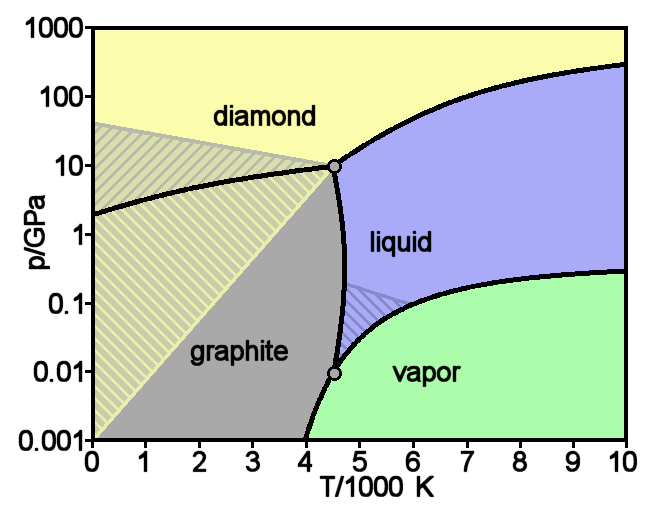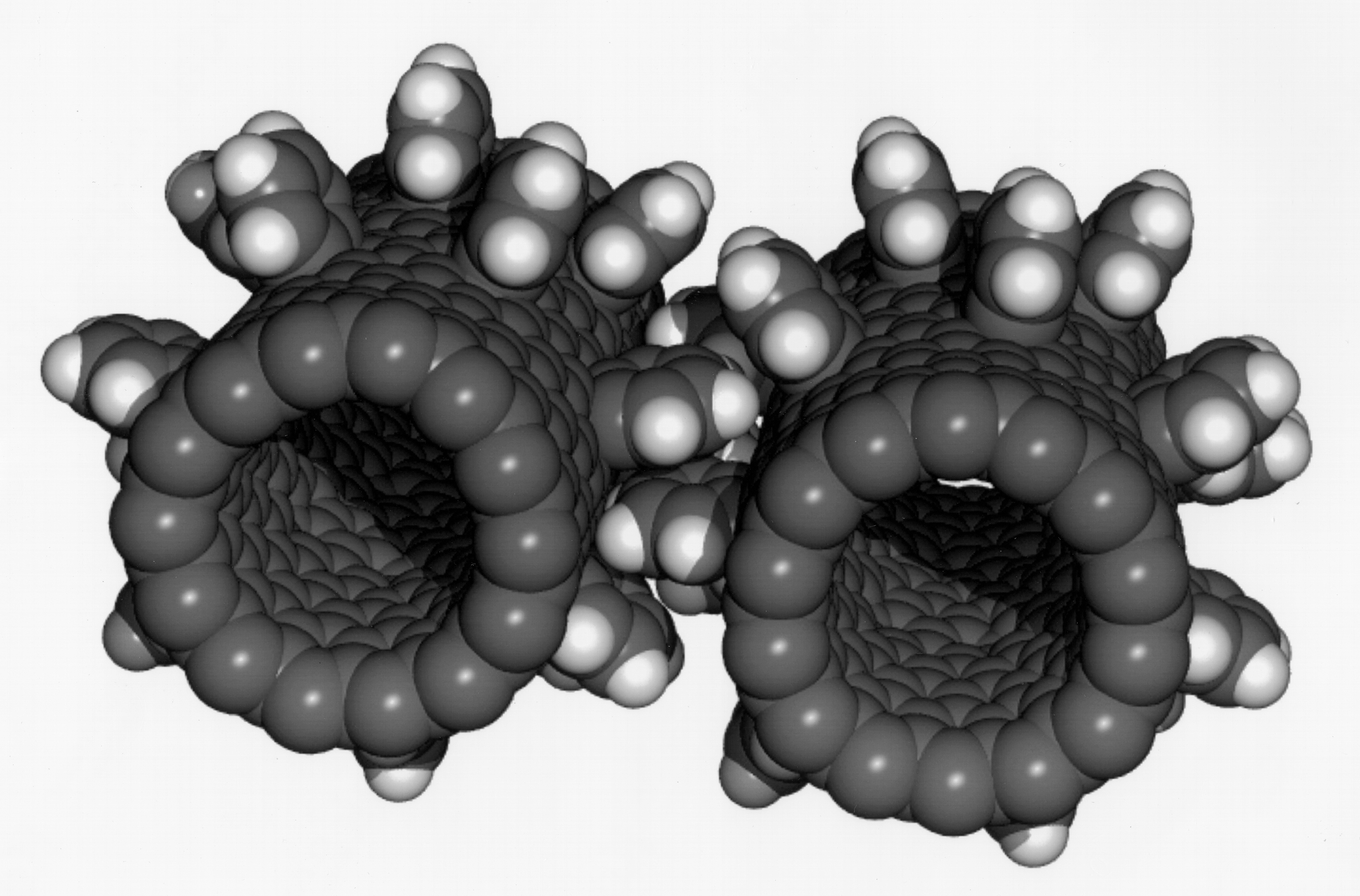|
Center For NanoScience
The Center for NanoScience (CeNS) was founded in 1998 at the Ludwig-Maximilians-University (LMU) in Munich. Its aim is to promote, bundle and join interdisciplinary research in the field of nanoscience in the Munich area. CeNS is an association of working groups from basic research and industry and acts as a network which connects various institutions from a variety of disciplines. The members cooperate in a horizontal structure based on voluntary commitment, and are supported by a small coordination team. CeNS consolidates research activities at the nanometer scale from physics, chemistry, biochemistry, and medicine. The CeNS network promotes the mutual understanding and the collaboration between these disciplines by joint seminars, workshops, and schools. See also * Center on Nanotechnology and Society The Center on Nanotechnology and Society (Nano & Society) is an affiliate of Illinois Institute of Technology (IIT) and is housed at IIT’s Chicago-Kent College of Law. ... [...More Info...] [...Related Items...] OR: [Wikipedia] [Google] [Baidu] |
Self-assembly
Self-assembly is a process in which a disordered system of pre-existing components forms an organized structure or pattern as a consequence of specific, local interactions among the components themselves, without external direction. When the constitutive components are molecules, the process is termed molecular self-assembly. Self-assembly can be classified as either static or dynamic. In ''static'' self-assembly, the ordered state forms as a system approaches equilibrium, reducing its free energy. However, in ''dynamic'' self-assembly, patterns of pre-existing components organized by specific local interactions are not commonly described as "self-assembled" by scientists in the associated disciplines. These structures are better described as " self-organized", although these terms are often used interchangeably. Self-assembly in chemistry and materials science Self-assembly in the classic sense can be defined as ''the spontaneous and reversible organization of molec ... [...More Info...] [...Related Items...] OR: [Wikipedia] [Google] [Baidu] |
Organic Semiconductor
Organic semiconductors are solids whose building blocks are pi-bonded molecules or polymers made up by carbon and hydrogen atoms and – at times – heteroatoms such as nitrogen, sulfur and oxygen. They exist in the form of molecular crystals or amorphous thin films. In general, they are electrical insulators, but become semiconducting when charges are either injected from appropriate electrodes, upon doping or by photoexcitation. General properties In molecular crystals the energetic separation between the top of the valence band and the bottom conduction band, i.e. the band gap, is typically 2.5–4 eV, while in inorganic semiconductors the band gaps are typically 1–2 eV. This implies that they are, in fact, insulators rather than semiconductors in the conventional sense. They become semiconducting only when charge carriers are either injected from the electrodes or generated by intentional or unintentional doping. Charge carriers can also be generated in the course ... [...More Info...] [...Related Items...] OR: [Wikipedia] [Google] [Baidu] |
Monolayer
A monolayer is a single, closely packed layer of atoms, molecules, or cells. In some cases it is referred to as a self-assembled monolayer. Monolayers of layered crystals like graphene and molybdenum disulfide are generally called 2D materials. Chemistry A Langmuir monolayer or insoluble monolayer is a one-molecule thick layer of an insoluble organic material spread onto an aqueous sub phase in a Langmuir-Blodgett trough. Traditional compounds used to prepare Langmuir monolayers are amphiphilic materials that possess a hydrophilic headgroup and a hydrophobic tail. Since the 1980s a large number of other materials have been employed to produce Langmuir monolayers, some of which are semi-amphiphilic, including polymeric, ceramic or metallic nanoparticles and macromolecules such as polymers. Langmuir monolayers are extensively studied for the fabrication of Langmuir-Blodgett film (LB films), which are formed by transferred monolayers on a solid substrate. A Gibbs monolayer o ... [...More Info...] [...Related Items...] OR: [Wikipedia] [Google] [Baidu] |
Graphite
Graphite () is a crystalline form of the element carbon. It consists of stacked layers of graphene. Graphite occurs naturally and is the most stable form of carbon under standard conditions. Synthetic and natural graphite are consumed on large scale (300 kton/year, in 1989) for uses in pencils, lubricants, and electrodes. Under high pressures and temperatures it converts to diamond. It is a weak conductor of heat and electricity. Types and varieties Natural graphite The principal types of natural graphite, each occurring in different types of ore deposits, are * Crystalline small flakes of graphite (or flake graphite) occurs as isolated, flat, plate-like particles with hexagonal edges if unbroken. When broken the edges can be irregular or angular; * Amorphous graphite: very fine flake graphite is sometimes called amorphous; * Lump graphite (or vein graphite) occurs in fissure veins or fractures and appears as massive platy intergrowths of fibrous or acicular cry ... [...More Info...] [...Related Items...] OR: [Wikipedia] [Google] [Baidu] |
Ludwig Maximilian University Of Munich
The Ludwig Maximilian University of Munich (simply University of Munich or LMU; german: link=no, Ludwig-Maximilians-Universität München) is a public research university in Munich, Bavaria, Germany. Originally established as the University of Ingolstadt in 1472 by Duke Ludwig IX of Bavaria-Landshut, it is Germany's sixth-oldest university in continuous operation. In 1800, the university was moved from Ingolstadt to Landshut by King Maximilian I Joseph of Bavaria when the city was threatened by the French, before being transferred to its present-day location in Munich in 1826 by King Ludwig I of Bavaria. In 1802, the university was officially named Ludwig-Maximilians-Universität by King Maximilian I of Bavaria in honor of himself and Ludwig IX. LMU is currently the second-largest university in Germany in terms of student population; in the 2018/19 winter semester, the university had a total of 51,606 matriculated students. Of these, 9,424 were freshmen, while international ... [...More Info...] [...Related Items...] OR: [Wikipedia] [Google] [Baidu] |
Munich
Munich ( ; german: München ; bar, Minga ) is the capital and most populous city of the German state of Bavaria. With a population of 1,558,395 inhabitants as of 31 July 2020, it is the third-largest city in Germany, after Berlin and Hamburg, and thus the largest which does not constitute its own state, as well as the 11th-largest city in the European Union. The city's metropolitan region is home to 6 million people. Straddling the banks of the River Isar (a tributary of the Danube) north of the Bavarian Alps, Munich is the seat of the Bavarian administrative region of Upper Bavaria, while being the most densely populated municipality in Germany (4,500 people per km2). Munich is the second-largest city in the Bavarian dialect area, after the Austrian capital of Vienna. The city was first mentioned in 1158. Catholic Munich strongly resisted the Reformation and was a political point of divergence during the resulting Thirty Years' War, but remained physicall ... [...More Info...] [...Related Items...] OR: [Wikipedia] [Google] [Baidu] |
Nanoscience
The nanoscopic scale (or nanoscale) usually refers to structures with a length scale applicable to nanotechnology, usually cited as 1–100 nanometers (nm). A nanometer is a billionth of a meter. The nanoscopic scale is (roughly speaking) a lower bound to the mesoscopic scale for most solids. For technical purposes, the nanoscopic scale is the size at which fluctuations in the averaged properties (due to the motion and behavior of individual particles) begin to have a significant effect (often a few percent) on the behavior of a system, and must be taken into account in its analysis. The nanoscopic scale is sometimes marked as the point where the properties of a material change; above this point, the properties of a material are caused by 'bulk' or 'volume' effects, namely which atoms are present, how they are bonded, and in what ratios. Below this point, the properties of a material change, and while the type of atoms present and their relative orientations are still import ... [...More Info...] [...Related Items...] OR: [Wikipedia] [Google] [Baidu] |
Center On Nanotechnology And Society
The Center on Nanotechnology and Society (Nano & Society) is an affiliate of Illinois Institute of Technology (IIT) and is housed at IIT’s Chicago-Kent College of Law. Nano & Society is an affiliate of the Institute on Biotechnology and the Human Future, also based at Chicago-Kent College of Law. Purpose The Center is intended for interdisciplinary research, education, and discussion on ethical, legal, economic, policy, and broader social implications of nanoscale science; it approaches nanotechnology Nanotechnology, also shortened to nanotech, is the use of matter on an atomic, molecular, and supramolecular scale for industrial purposes. The earliest, widespread description of nanotechnology referred to the particular technological goal o ... with a special focus on the human condition. The Center brings researchers in nano science, law, ethics, medicine, and the social sciences together with leaders in business and industry. Online offerings Nano & Society co ... [...More Info...] [...Related Items...] OR: [Wikipedia] [Google] [Baidu] |
Nanotechnology Institutions
Nanotechnology, also shortened to nanotech, is the use of matter on an atomic, molecular, and supramolecular scale for industrial purposes. The earliest, widespread description of nanotechnology referred to the particular technological goal of precisely manipulating atoms and molecules for fabrication of macroscale products, also now referred to as molecular nanotechnology. A more generalized description of nanotechnology was subsequently established by the National Nanotechnology Initiative, which defined nanotechnology as the manipulation of matter with at least one dimension sized from 1 to 100 nanometers (nm). This definition reflects the fact that quantum mechanical effects are important at this quantum-realm scale, and so the definition shifted from a particular technological goal to a research category inclusive of all types of research and technologies that deal with the special properties of matter which occur below the given size threshold. It is therefore common to ... [...More Info...] [...Related Items...] OR: [Wikipedia] [Google] [Baidu] |
1998 Establishments In Germany
1998 was designated as the ''International Year of the Ocean''. Events January * January 6 – The ''Lunar Prospector'' spacecraft is launched into orbit around the Moon, and later finds evidence for frozen water, in soil in permanently shadowed craters near the Moon's poles. * January 11 – Over 100 people are killed in the Sidi-Hamed massacre in Algeria. * January 12 – Nineteen European nations agree to forbid human cloning. * January 17 – The ''Drudge Report'' breaks the story about U.S. President Bill Clinton's alleged affair with Monica Lewinsky, which will lead to the House of Representatives' impeachment of him. February * February 3 – Cavalese cable car disaster: A United States military pilot causes the deaths of 20 people near Trento, Italy, when his low-flying EA-6B Prowler severs the cable of a cable-car. * February 4 – The 5.9 Afghanistan earthquake shakes the Takhar Province with a maximum Mercalli intensity of VII (''Very strong''). With up to 4, ... [...More Info...] [...Related Items...] OR: [Wikipedia] [Google] [Baidu] |
Research Institutes Established In 1998
Research is "creative and systematic work undertaken to increase the stock of knowledge". It involves the collection, organization and analysis of evidence to increase understanding of a topic, characterized by a particular attentiveness to controlling sources of bias and error. These activities are characterized by accounting and controlling for biases. A research project may be an expansion on past work in the field. To test the validity of instruments, procedures, or experiments, research may replicate elements of prior projects or the project as a whole. The primary purposes of basic research (as opposed to applied research) are documentation, discovery, interpretation, and the research and development (R&D) of methods and systems for the advancement of human knowledge. Approaches to research depend on epistemologies, which vary considerably both within and between humanities and sciences. There are several forms of research: scientific, humanities, artistic, economic ... [...More Info...] [...Related Items...] OR: [Wikipedia] [Google] [Baidu] |






